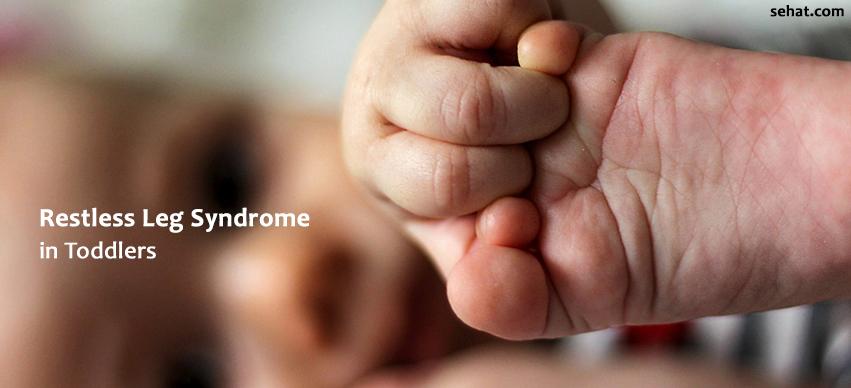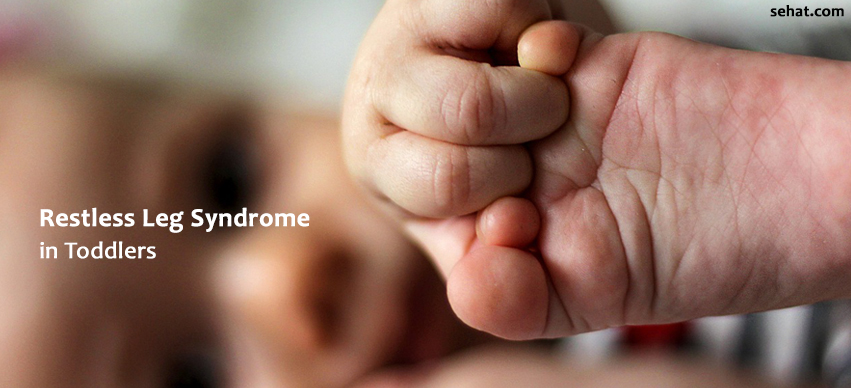
Restless leg syndrome is categorized under a broad term called functional movement disorders (FMD) which are fairly common neurological conditions in both adults and children. Functional movement disorders are abnormal movements of the legs or limbs which can be significantly altered by distraction. These disorders involve a set of both motor and sensory symptoms. This article will help you understand more about restless legs syndrome in toddlers.
What Is Restless Leg Syndrome In Toddlers?
Restless legs syndrome in toddlers is a condition characterized by an irresistible urge to move the legs which may be stopped partially or completely.
There are no specific tests to diagnose restless legs syndrome in toddlers. It can only be diagnosed clinically by appropriate examination and evaluation of the child.
Restless legs syndrome in toddlers can have the following consequences;
1. Conduction And Behavioral Problems
Conduction and behavioral problems such as undue aggression, hyperactivity, inattentiveness, and daytime sleepiness due to the inability to fall asleep or maintain sleep at night.
2. Moderate Consequences
Moderate consequences of restless leg syndrome in toddlers include muscular aches and pains.
3. Severe Consequences
Severe consequences including poor social development, poor performance at school, and abnormal interactions with peers frequently resulting in an incorrect diagnosis of psychological problems among affected toddlers.
What Causes Restless Legs Syndrome In Toddlers?
Restless legs syndrome can be of two types;
1. Primary
Having no specific identifiable cause. Primary restless legs syndrome usually has a hereditary background. Strong family history is often responsible for the presence of restless legs syndrome in toddlers.
2. Secondary
The presence of some illness or underlying etiology leads to restless legs syndrome. Secondary restless leg syndrome has the following causes;
- Iron deficiency – Iron is essential for the formation of dopamine by the body. A study proved that a large percentage of children with restless leg syndrome also had low serum ferritin levels.
- Peripheral neuropathy - Weakness, pain, and numbness in limbs due to nerve damage
- Uremia – A condition of high levels of urea in the blood
- Certain medications – These may be responsible for or may worsen symptoms of restless leg syndrome include antidepressants, sedative antihistamines, selective serotonin uptake inhibitors, and dopamine receptors, antagonists.
What Are The Signs And Symptoms Of Restless Legs Syndrome In Toddlers?
Restless legs syndrome in toddlers may present with the following signs and symptoms;
- Restless legs syndrome follows a circadian pattern that is, occurring towards evening or at night and rarely during day time.
- The restlessness of one or both legs characterized by repetitive or abnormal movements is present.
- Restlessness occurs when the child is a cramped space such as a classroom, airplane, in a car, or in a movie theater.
- The child may appear to be very fidgety, overactive, or inattentive.
- Restless movements of legs include walking, running, stretching, rubbing, or kicking the legs.
- Pain in restless legs syndrome occurs commonly below the knees including both calves. Thigh pain may also be present.
- Pain or aches in restless legs syndrome is partially or completely relieved by moving the legs.
- A complaint of disrupted sleep is common due to periodic limb movements at night.
How To Diagnose Restless Legs Syndrome In Toddlers?
Diagnostic criteria to identify restless legs syndrome in both adults and children include;
- Urge to move the legs accompanied by or occurring as a result of uncomfortable or unpleasant sensations in the legs.
- Urging to move legs or uncomfortable sensation in legs during periods of rest or inactivity such as sitting in one place or lying down.
- Urge to move the legs or unpleasant sensation in the legs only during the evening or at night.
- Urge to move legs or the unpleasant sensation in legs partially or completely relieved as long as the movement continues such as walking or stretching.
If the child is unable to elicit the symptoms specifically, then at least two of the following must be present to diagnose restless legs syndrome;
- Sleep disturbance not typical for the age
- A family history of restless leg syndrome
- A polysomnogram documenting periodic limb movement index of 5 or more movements per hour of sleep.
How To Treat Restless Legs Syndrome In Toddlers?
There is no specific treatment available for restless legs syndrome. However, several drugs have been tried such as levodopa, dopamine antagonists, benzodiazepines, and alpha-adrenergic medications.
- Long term risks of treating children with these medicines are not known yet.
- Clonazepam and clonidine are reported to be fairly well tolerated. Clonazepam is used selectively as it may relax the upper airways resulting in breathing disorders during sleep.
- The iron deficiency must be considered as a potential cause for restless legs syndrome and should be treated accordingly. However, no specific guidelines have been laid down for the treatment of iron deficiency in children with restless legs syndrome.
- Devices such as foot wrap, pneumatic compression device, near-infrared spectroscopy, and vibration pads are used effectively to manage restless leg syndrome among adult patients. Their safety for toddlers is not yet documented.
Home Remedies For Restless Leg Syndrome In Toddlers
Some ways by which restless legs syndrome in toddlers can be managed at home include;
- Hot and cold compress is useful in reducing aches and pains.
- Massaging the legs with warm oil also reduces leg pain as it improves blood circulation in legs.
- Engage your child in some form of activity or exercise. The exercise need not be of too severe in intensity. Walking, jogging, running, or playing the park not only creates distraction but also tires out the child helping him/her to sleep better at night.
- Inculcate a regular sleep routine. Putting your child to sleep at the same time promotes good sleep.
- Prevent the use of phones, tablets, or television in the bedroom. These can be a source of potential distraction for your toddler and may prevent sleep. Similarly, avoid using electronic devices at least 3-4 hours prior to sleep.
- Reduce sugar in the diet. Research studies have proven that children who consume a lot of sweet or sugary foods such as candies, chocolates, or even plain sugar are hyperactive which may aggravate symptoms of restless leg syndrome.
Conscious efforts to stop these movements are quite effective but can be achieved only for a short period of time. Social interactions can also help in relieving symptoms of restless legs syndrome temporarily.
Any kind of treatment, whether medications or home remedies primarily focus on reduction of risk factors and avoidance of triggers which may worsen restless legs syndrome.

